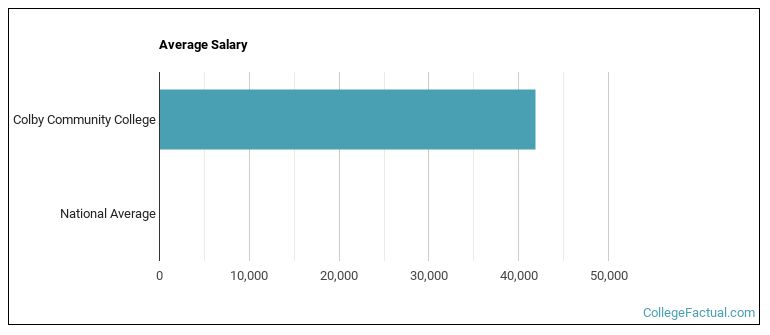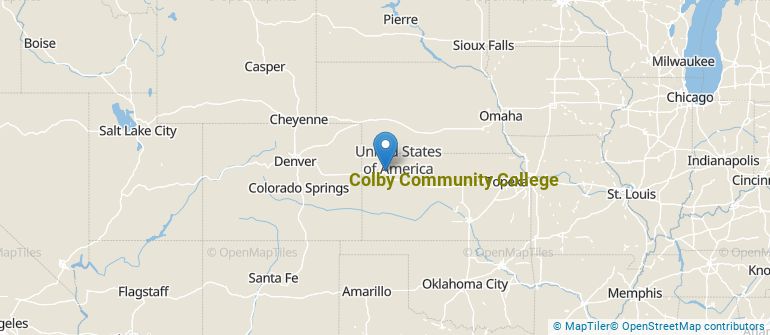 by our College Data Analytics Team
by our College Data Analytics Team
Explore the best ranked schools for the programs you are most interested in.
Colby Community College is ranked #1,690 out of 2,152 schools in the nation for overall quality on College Factual's 2025 Best Colleges list.
Colby Community College also holds the #29 spot on the Best Colleges in Kansas ranking.
If you are worried about getting into Colby Community College, don't be. The school has a liberal open admissions policy, which means you only need to meet basic requirements in order to be admitted. Still, be sure to submit a complete application and provide any other requested materials.
The student to faculty ratio is often used as a measure to gauge how much access students will have to their professors - the lower the number, the better. At Colby Community College, this rate is 19 to 1, which is high when compared to the national average of 15 to 1.
In addition to the student to faculty ratio, some people look at what percentage of faculty members are full-time as a sign of how much time professors will be able to spend with their students. This is because part-time teachers may not be be on campus as much as their full-time counterparts.
The full-time faculty percentage at Colby Community College is 91%. This is higher than the national average of 47%.
The freshmen retention rate tells us what percentage of first-year, full-time students choose to continue on to their sophomore year at a particular school. The rate at Colby Community College is 69%, which is about average when compared to the national rate of 68%.
During the 2017-2018 academic year, there were 1,327 undergraduates at Colby Community College with 581 being full-time and 746 being part-time.
| $0-30 K | $30K-48K | $48-75 | $75-110K | $110K + |
|---|---|---|---|---|
| $5,341 | $5,621 | $6,618 | $9,940 | $7,562 |
The net price is calculated by adding tuition, room, board and other costs and subtracting financial aid.Note that the net price is typically less than the published for a school. For more information on the sticker price of Colby Community College, see our tuition and fees and room and board pages.
Almost 66% of college students who graduated with the class of 2018 took out student loans, but that percentage varies from school to school. At Colby Community College, approximately 22% of students took out student loans averaging $4,892 a year. That adds up to $19,568 over four years for those students.

See which majors at Colby Community College make the most money.
Get more details about the location of Colby Community College.

Contact details for Colby Community College are given below.
| Contact Details | |
|---|---|
| Address: | 1255 S Range, Colby, KS 67701 |
| Phone: | 785-462-3984 |
| Website: | www.colbycc.edu/ |
| Most Popular Majors | Bachelor’s Degrees | Average Salary of Graduates |
|---|---|---|
| Liberal Arts General Studies | 215 | NA |
| Energy Systems Technologies | 65 | NA |
| Veterinary Administrative Services | 62 | NA |
| Practical Nursing & Nursing Assistants | 49 | NA |
| Veterinary/Animal Health Technologies/Technicians | 27 | NA |
| Nursing | 17 | NA |
| Allied Health & Medical Assisting Services | 16 | NA |
| Electronics Engineering Technology | 12 | NA |
| Agricultural Economics & Business | 11 | NA |
| Precision Metal Working | 9 | NA |
Online learning options are becoming more and more popular at American colleges and universities. Online classes are great for students who have busy schedules or for those who just want to study on their own time.
In 2022-2023, 923 students took at least one online class at Colby Community College. This is an increase from the 763 students who took online classes the previous year.
| Year | Took at Least One Online Class | Took All Classes Online |
|---|---|---|
| 2022-2023 | 923 | 609 |
| 2021-2022 | 763 | 452 |
| 2020-2021 | 724 | 431 |
| 2018-2019 | 1,412 | 435 |
Learn more about online learning at Colby Community College.
Footnotes
*The racial-ethnic minorities count is calculated by taking the total number of students and subtracting white students, international students, and students whose race/ethnicity was unknown. This number is then divided by the total number of students at the school to obtain the racial-ethnic minorities percentage.
References
More about our data sources and methodologies.